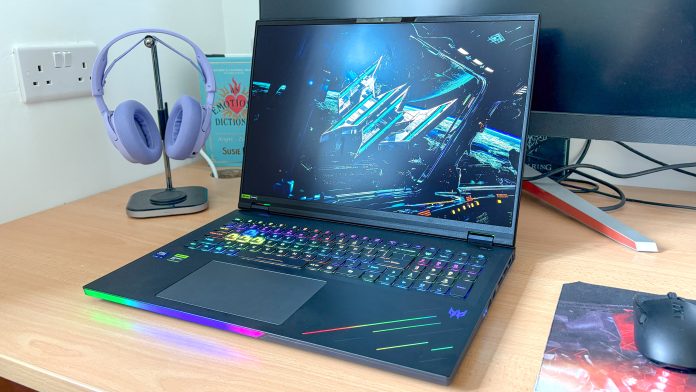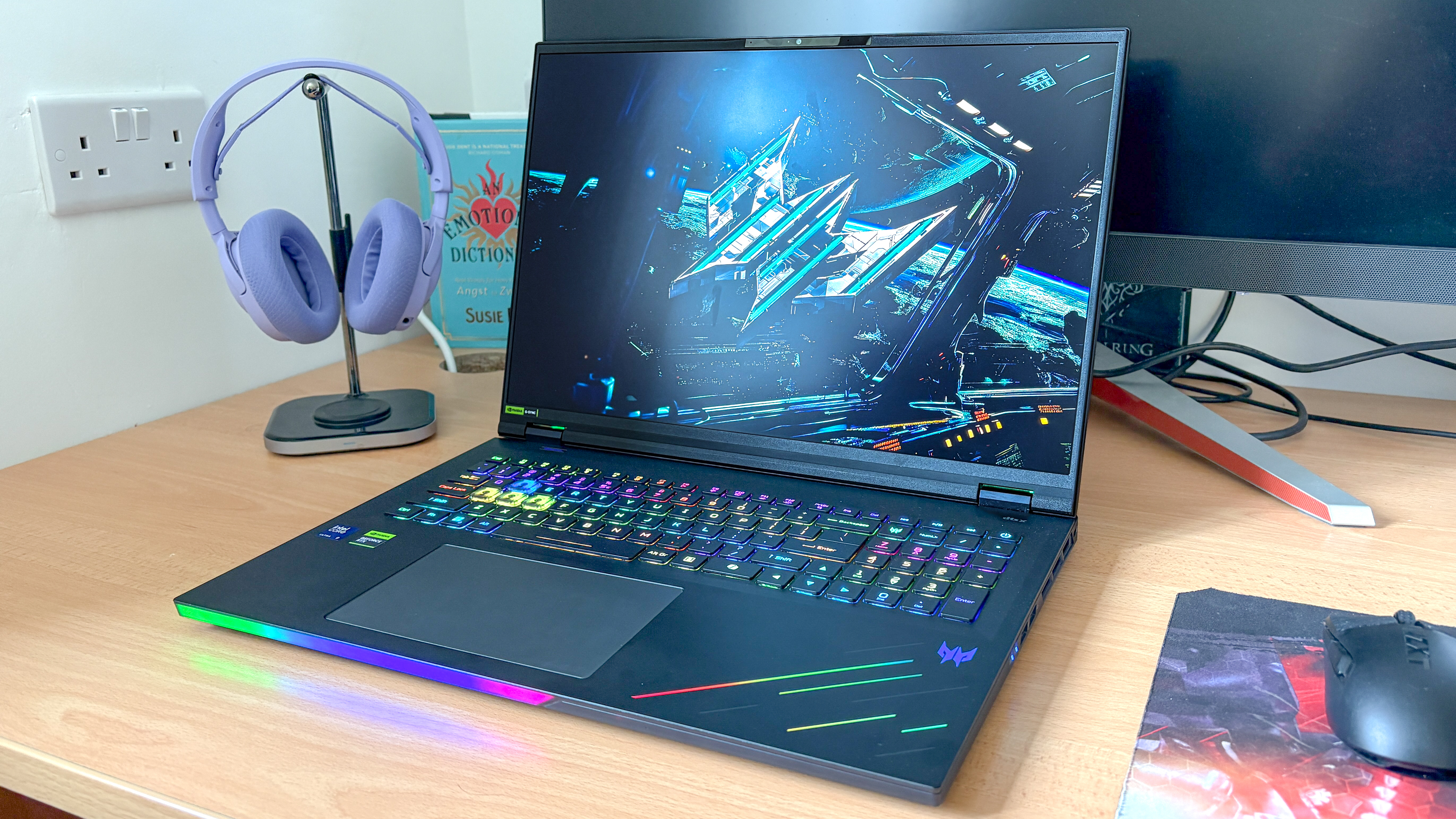
A gaming desktop or laptop, which to get? It’s an age-old question I’ve been pondering lately, especially now that the best gaming laptops come fitted with the latest peak hardware, pushing CPU and GPU power even further.
To many, it’s an easy choice. The best gaming PCs easily deliver a higher bar for performance, with soaring power output and larger components that can be customized to one’s liking. But desktop-class laptops exist for good reason, as they show just how much power can be packed into a mobile device — and it’s hard not to be impressed by the performance they dish out.
Nothing says that more than the recent Acer Predator Helios 18 AI I’ve tested. This machine boasts an Intel Core Ultra 9 275HX CPU, Nvidia GeForce RTX 5080 mobile GPU, 32GB of DDR5 RAM and 1TB SSD. It’s a monster, and as far as desktop replacements go, it fits the bill.
But then there’s the juggernaut that is the Acer Predator Orion 7000 I also recently tried out, equipped with an Intel Core Ultra 7 265KF CPU, RTX 5080 desktop GPU, 32GB of DDR5 RAM and 2TB SSD. Now this is a beast, capable of delivering 4K gaming with frame rates as high as 160 FPS (thanks to Nvidia DLSS 4).
Two mighty gaming machines, one similar price. The Helios 18 AI can be found for $3,099/£3,099, while the Orion 7000 for around £3,299 (no U.S. pricing yet, but I can imagine it being around a similar $3,299). As you can tell, these are premium investments, so I’d be making sure my wallet is happy with my choices.
Can both gaming PCs crank up settings to max in the best PC games? You bet your GPU they can, but the real matter here is the difference in performance they deliver. And so, I put the Acer Predator Helios 18 AI to the test — all to see if it really can measure up to the levels of a gaming desktop. Let’s dive into the numbers.
Impressive comparisons… sort of
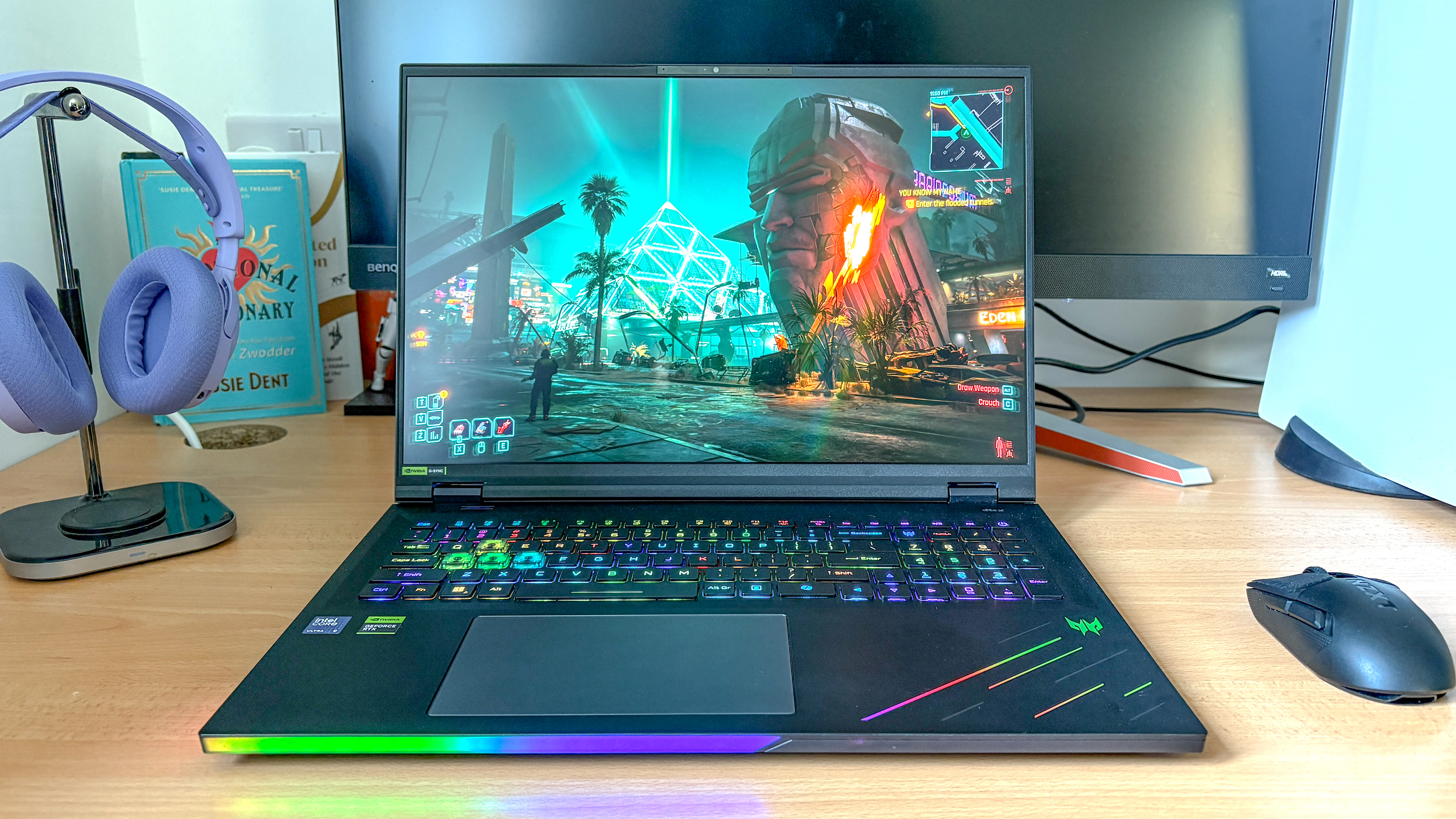
Look, even a high-end gaming laptop would never be able to beat a tower with desktop-equivalent specs. So realistically, the Predator Helios 18 AI doesn’t stand a chance against the Predator Orion 7000, as they’re two different classes of gaming machines.
As you’ll find, the benchmarks say it all. With its sizeably impressive 18-inch WQXGA (2560 x 1600) mini-LED panel with a 250Hz refresh rate, the Helios 18 AI can’t deliver 4K (3840 x 2160) visuals on its own, so the Orion 7000 already had to put up with a heavier load when I tested its 4K performance.
But despite the gap in resolutions, the Helios 18 AI is still stunning to play on during real-time gameplay. And if the extra per-pixel count isn’t a huge concern, you’ll find it can pull off commendable frame rates.
Swipe to scroll horizontally
| Row 0 – Cell 0 |
Acer Predator Helios 18 AI (RTX 5080 @ 1600p) |
Acer Predator Orion 7000 (RTX 5080 @ 4K) |
|
Black Myth Wukong (Cinematic) |
57 (DLSS off), 167 (DLSS x4) |
49 (DLSS off), 166 (DLSS x4) |
|
Cyberpunk 2077 (Ray Tracing Ultra) |
36.7 (DLSS off), 189 (DLSS x4) |
55.48 (DLSS off), 153 (DLSS x4) |
|
Doom: The Dark Ages (with path tracing) |
39.67 (DLSS off), 127 (DLSS x4) |
36.73 (DLSS off), 120 FPS (DLSS x4) |
Using the built-in benchmarking tools in games like Black Myth Wukong, Cyberpunk 2077 and Doom: The Dark Ages, I saw frame rates skyrocket to nearly 200 FPS with Nvidia’s frame generation at x4. That’s all at max settings as well, and at 1600p resolution, that’s some mighty performance.
Those numbers dip without DLSS turned on, though, and I wouldn’t want to play Cyberpunk 2077 at just over 30 FPS. Still, I was impressed to see it reach nearly 60 FPS in Black Myth: Wukong, even with the highest Cinematic settings.
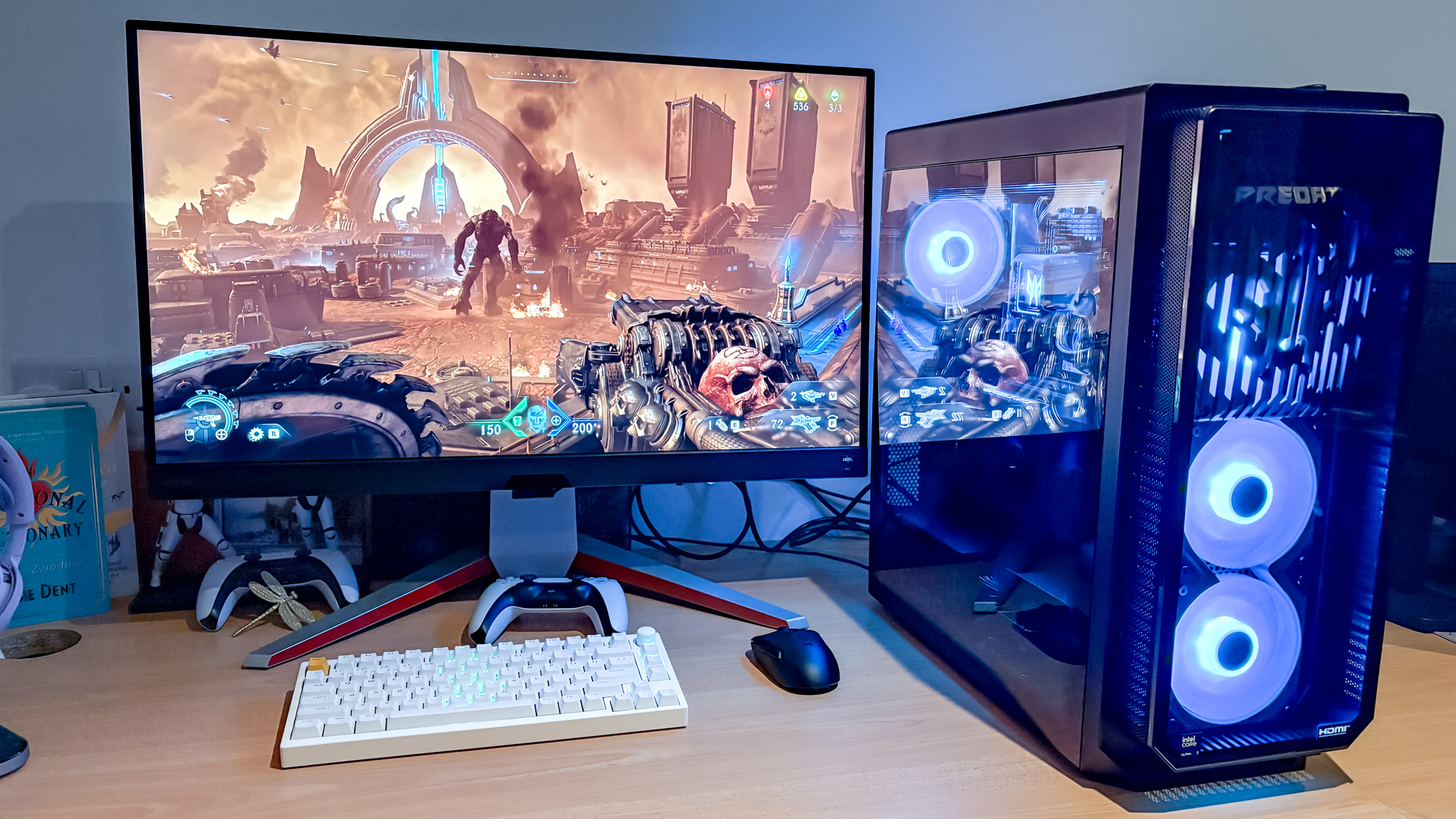
A valiant effort, but when you consider the Orion 7000 is reaching these numbers at 4K, you can see the clear difference in power. If resolution was taken down a notch, Acer’s gaming desktop would wipe the floor with its gaming laptop.
Moving over to the 3DMark benchmarking tool, which scores the CPU and GPU’s rendering capabilities under different conditions, the difference is made clearer:
Swipe to scroll horizontally
| Row 0 – Cell 0 |
Acer Predator Helios 18 AI |
Acer Predator Orion 7000 |
|
Steel Nomad |
4,532 |
8,474 |
|
Fire Strike |
33,993 |
49,218 |
|
Fire Strike Ultra |
12,694 |
21,235 |
|
Time Spy |
17,341 |
28,051 |
|
Time Spy Extreme |
8,977 |
15,117 |
|
Speed Way |
4,865 |
8,674 |
|
Port Royal |
11,690 |
21,055 |
In virtually all the graphics tests, the Helios 18 AI gets just over half the rendering performance of the Orion 7000. This is to be expected, of course, seeing as the RTX 5080 laptop GPU comes with up to 175W max power, while the RTX 5080 desktop GPU can utilize up to 360W power.
Either way, the Acer Predator Helios 18 AI still delivers commendable scores, even when compared to our current top 18-inch laptop contender: the Asus ROG Strix Scar 18. And when it comes to the rest of the benchmarks, including Geekbench and SSD speed results, it isn’t so far behind that it becomes a joke.
Swipe to scroll horizontally
| Row 0 – Cell 0 |
Acer Predator Helios 18 AI (Intel Core Ultra 9 275HX) |
Acer Predator Orion 7000 (Intel Core Ultra 7 265KF) |
|
Geekbench 6 single-core |
2693 |
3019 |
|
Geekbench 6 multi-core |
16324 |
19526 |
|
SSD speed test (MB/s) |
2537.01 (read) / 1892.48 (write) |
3205.08 (read) / 2557.7 (write) |
|
Video editing test (mm:ss) |
02:19 |
02:10 |
The perks of a gaming laptop
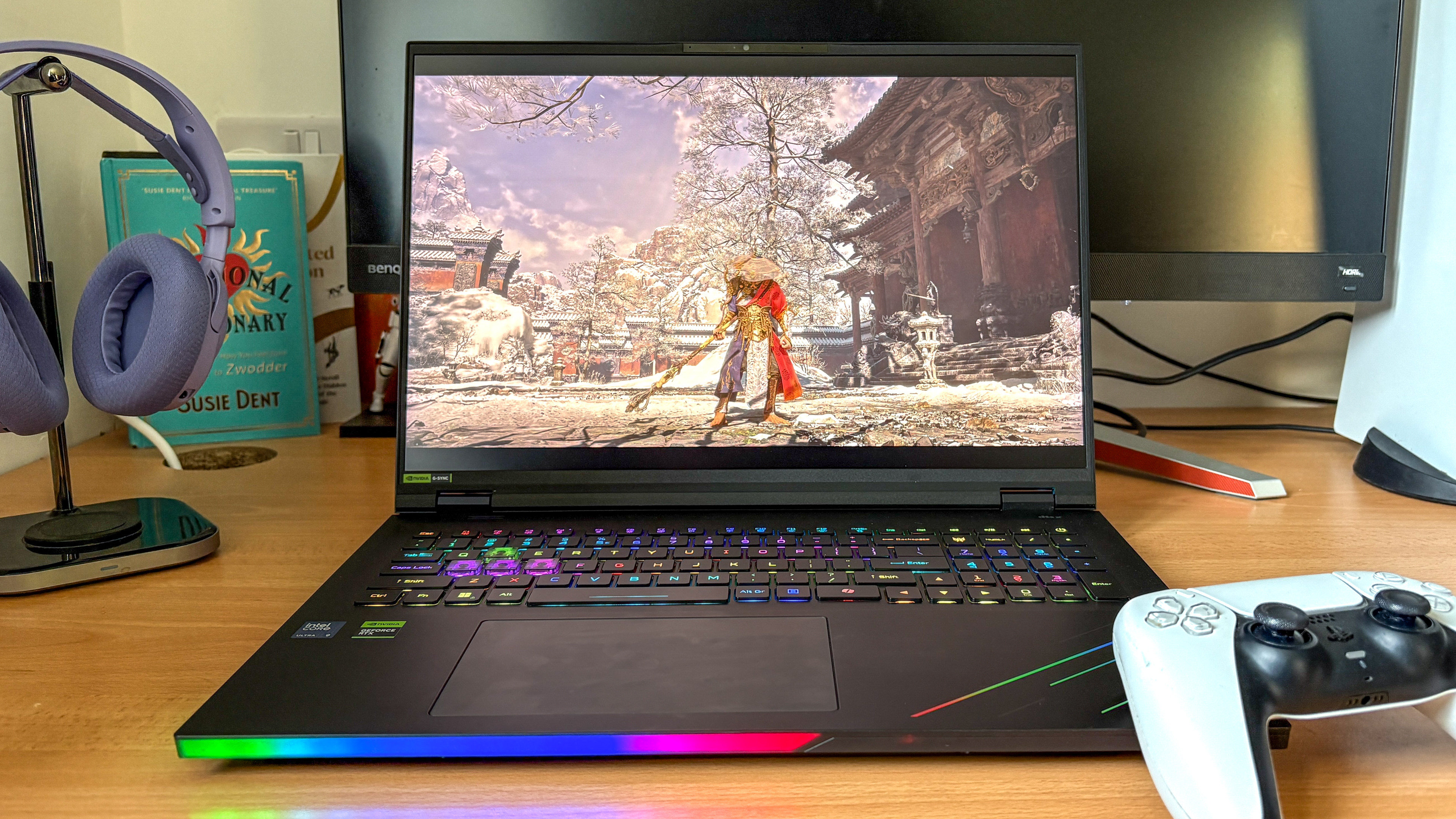
As per the results above, the performance gains you get from a gaming PC like the Acer Predator Orion 7000 over a laptop are substantial, and its value then soars over the Predator Helios 18 AI with their prices in mind.
But what if I want to take that kind of gaming power with me on a trip, to a pal’s house for a big ol’ LAN party, or just to another room? Well, that’s the perk of a gaming laptop: portability.
The Predator Helios 18 AI may weigh a hefty 7.7 pounds, but it sure beats lugging around the Orion 7000’s whopping 35.6 pounds from place to place. With its 18-inch size, it’s big enough to act as a generously sized computer, too — but one that’s portable.
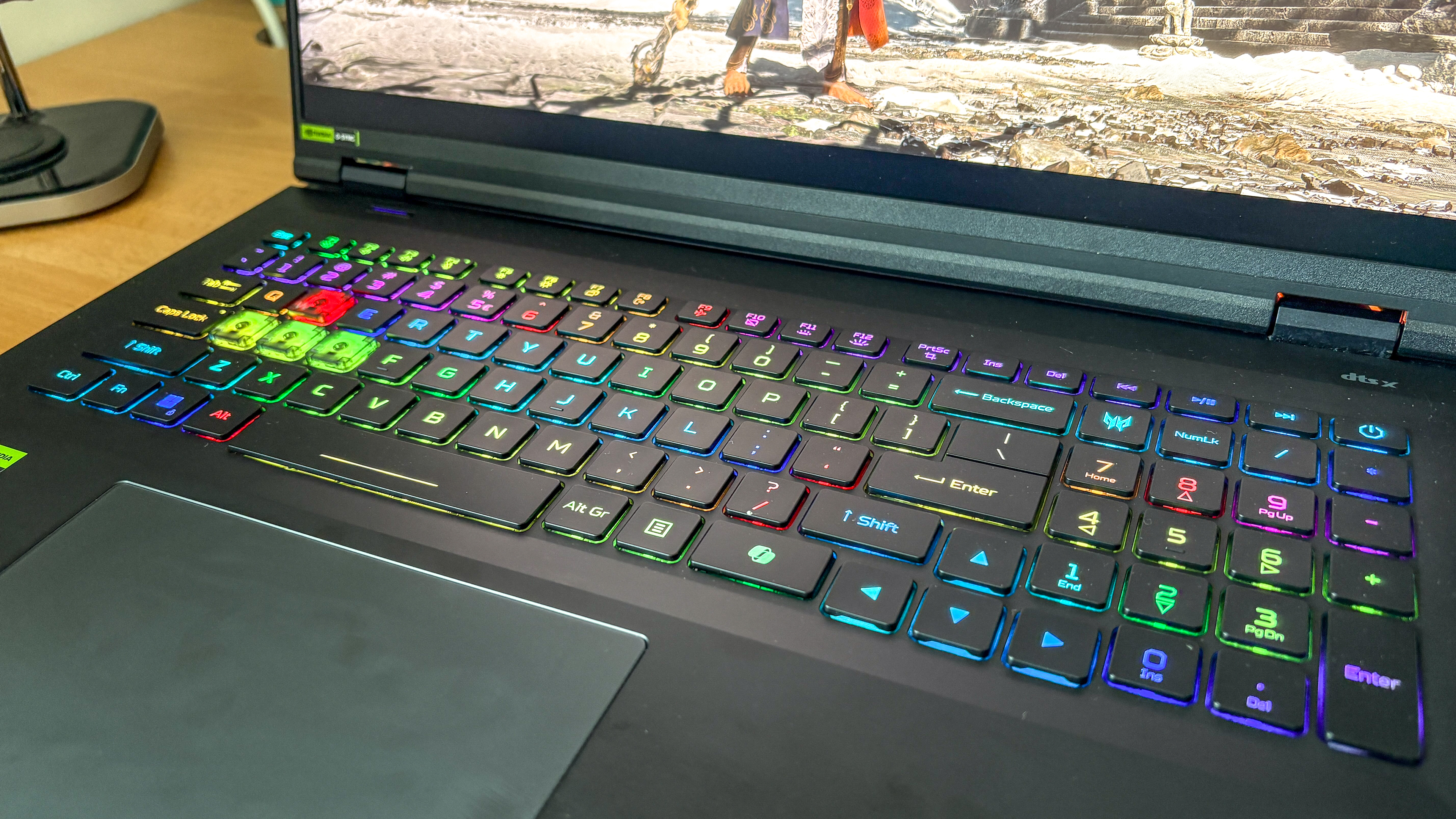
But a laptop is also an all-in-one device, coming with its own keyboard and monitor (and a trackpad, I suppose, but the best gaming mouse would be better suited). Unlike a gaming desktop, that’s less cash to spend on essential peripherals. And with the stunning per-key RGB keyboard (sporting hot-swappable WASD keys) and 18-inch mini-LED display with a mega-fast 205Hz refresh rate, these are premium assets to have.
Granted, it takes a lot of money to get high frame rates at equally high settings in a portable machine, even if it doesn’t quite match the sheer might of a gaming desktop. But if gaming on the go is more your jam (as is mine), then that’s where the perks of a gaming laptop like the Helios 18 AI shine.
Can a gaming laptop be a true desktop replacement?
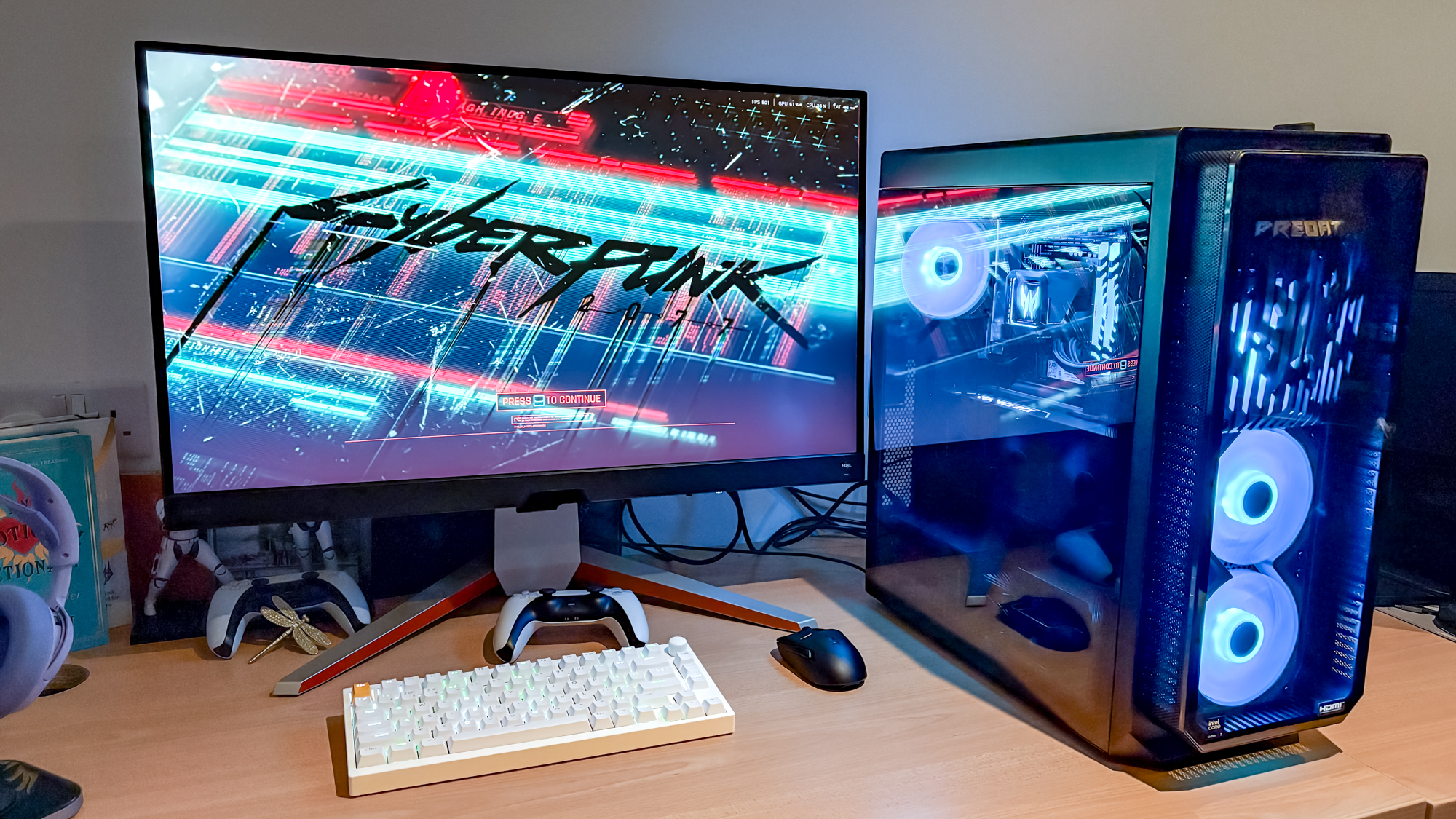
Back to the crux of the matter, and to put the big question on my mind to rest. Can a gaming laptop like the Acer Predator Helios 18 AI be a true desktop replacement? Well, compared to the power of the similarly priced Predator Orion 7000, not exactly.
But that doesn’t mean the Helios 18 AI isn’t mighty, and it boasts more than enough performance to blaze through the latest, high-demanding PC games (even if the fans can get a tad noisy). You’re still getting desktop-level performance — even if it’s just over half the power of a gaming desktop.
If stationary raw power is what’s needed, then the choice is obvious: a gaming desktop will always be the go-to option. But if an all-in-one setup and simple mobility calls, I wouldn’t feel like I’m missing out if using a premium gaming laptop. Sure, I’d be missing out on extra performance, but for the most part, I’m still getting pure joy out of playing high-end games at their finest.
Follow Tom’s Guide on Google News to get our up-to-date news, how-tos, and reviews in your feeds. Make sure to click the Follow button.
More from Tom’s Guide
- HP made a gaming PC for people who don’t want to look like they own a gaming PC — meet the Omen 35L Stealth Edition
- Nvidia Remix is bringing my favorite PC classics back to life — 5 games I can’t wait to play
- I spent 48 hours with the world’s first rollable laptop — here’s my pros and cons
Back to Gaming Laptops
![]()
Show more
